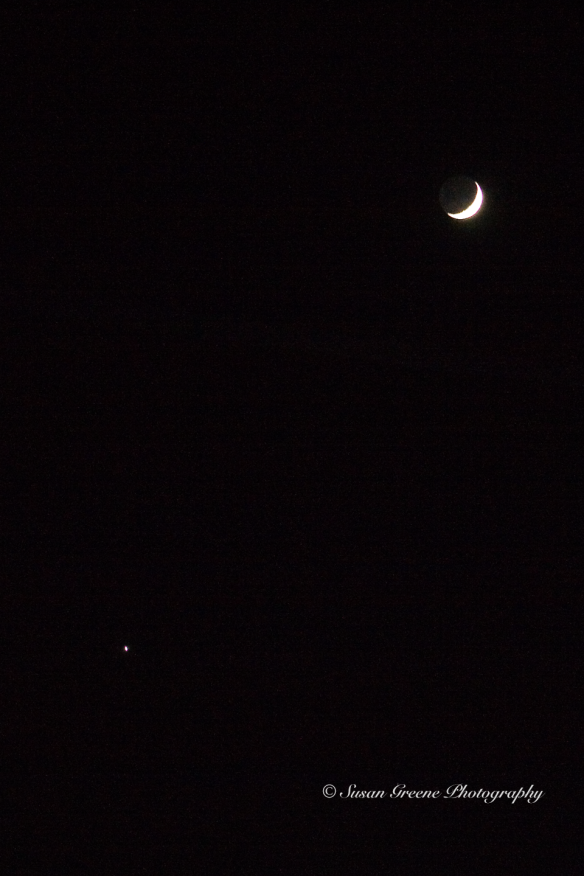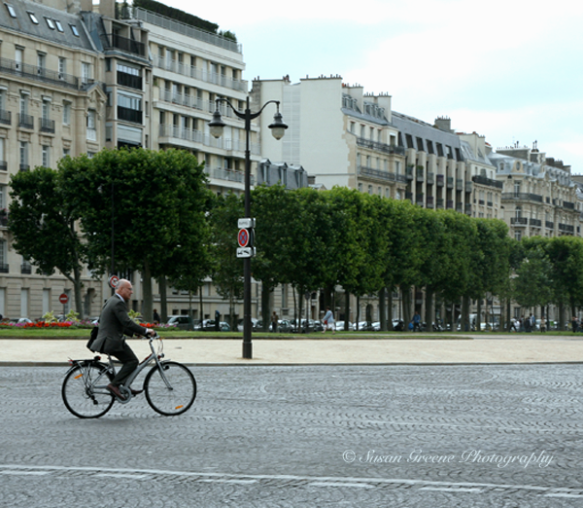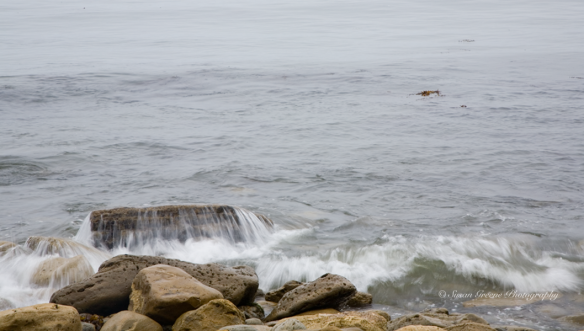Wrapping up this month’s shadow exploration prompted me to turn my camera towards the moon. I have always had a fascination with the moon, maybe it comes from growing up during the Apollo space program and watching the astronauts bouncing around on its surface or liking the idea of a “man in the moon” watching over us and keeping us safe at night. Whatever it was, I have been admiring and photographing it for years. 
The moon is continuously lit by the sun on one side. We see changes in the size of the illuminated part due to our location in relation to the moon at different times during the month. The lit portion is most easily observable, the rest remains shadowed. However, the shadowy bit is often faintly visible – not when it makes a daytime appearance though.
 During a full moon, is the optimal time for examining the shadows of the surface and searching for the face of the “man.”
During a full moon, is the optimal time for examining the shadows of the surface and searching for the face of the “man.”
 Occasionally, the moon,earth and sun line up in such a way that the moon passes into the earth’s shadow creating an eclipse. On February 20, 2008, there was a total lunar eclipse. Seeing the earth’s shadow slowly makes its way across the moon thrills me.
Occasionally, the moon,earth and sun line up in such a way that the moon passes into the earth’s shadow creating an eclipse. On February 20, 2008, there was a total lunar eclipse. Seeing the earth’s shadow slowly makes its way across the moon thrills me.
 Photographing the moon can be tricky, since it is a very bright object against a very dark background. First of all, a tripod is highly recommended along with a remote release, or using the self-timer on your camera will work if you don’t have a remote. A low ISO, 100 or 200, and smaller aperture, f16 or greater, are recommended for capturing the details of the surface. The shutter speed is what you will adjust for a proper exposure, a slower shutter speed will inevitably be necessary, explaining the need for the tripod. It helps to use a long telephoto lens. The moon is relatively small in the big sky and using a telephoto lens will bring it closer to fill your frame, 300mm lens or longer is recommended. Use the spot meter on your camera to obtain the correct exposure for the moon. Sometimes, you may have to improvise. Recently while riding in a car I spotted a moon shot I wanted to take but with no tripod I adjusted the ISO higher and aperture wider.
Photographing the moon can be tricky, since it is a very bright object against a very dark background. First of all, a tripod is highly recommended along with a remote release, or using the self-timer on your camera will work if you don’t have a remote. A low ISO, 100 or 200, and smaller aperture, f16 or greater, are recommended for capturing the details of the surface. The shutter speed is what you will adjust for a proper exposure, a slower shutter speed will inevitably be necessary, explaining the need for the tripod. It helps to use a long telephoto lens. The moon is relatively small in the big sky and using a telephoto lens will bring it closer to fill your frame, 300mm lens or longer is recommended. Use the spot meter on your camera to obtain the correct exposure for the moon. Sometimes, you may have to improvise. Recently while riding in a car I spotted a moon shot I wanted to take but with no tripod I adjusted the ISO higher and aperture wider.
Adding elements to your image along with the moon can add interest and a sense of place.
Looking to the sky and hoping to see the man in the moon.
~ Susan




































































